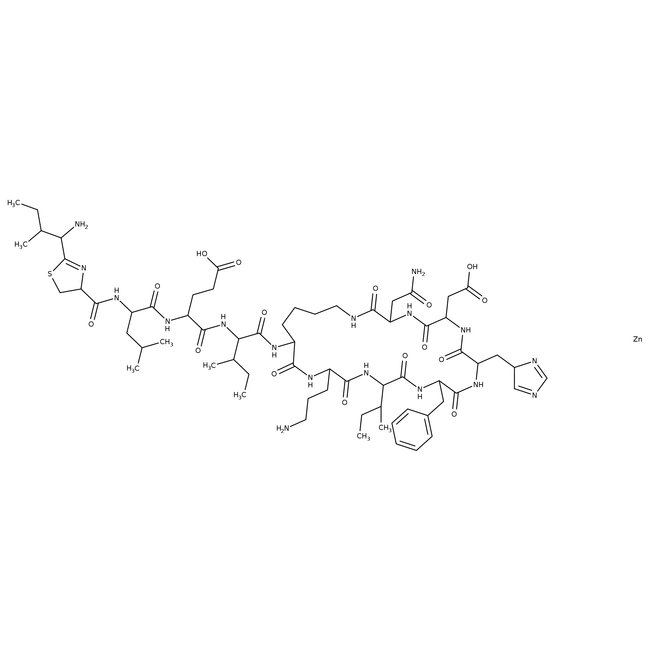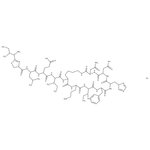Search Thermo Fisher Scientific
Thermo Scientific Chemicals
Bacitracin, potency min. 60 Units/mg
Bacitracin, CAS # 1405-87-4, is cyclic polypeptide-based antibiotic which exhibits activity against microbes causing pneumonia, skin, and eye infections.
Catalog number FSA226100050
View Price:Sign InSign in to see your account pricing. Need an account? Register with us today.
Quantity:
5 g
Packaging:
Glass Bottle
Specifications
Chemical Name or MaterialBacitracin
TypeBacitracin
Physical FormPowder
CAS1405-87-4
Health Hazard 1Warning
View more
This Thermo Scientific Chemicals brand product was originally part of the Acros Organics product portfolio. Some documentation and label information may refer to the legacy brand. The original Acros Organics product / item code or SKU reference has not changed as a part of the brand transition to Thermo Scientific Chemicals.
General Description
• Bacitracin is a mixture of at least nine different cyclic polypeptides, originally isolated from Bacillus bacteria in 1945
• Bacitracins work by binding divalent metal cations and preventing the hydrolysis of lipids into usable cell wall components
Applications
• Bacitracin has been paired with nanoparticles in some laboratory studies to increase its effectivity
• It is suitable for the laboratory study of bacterial resistance, infection, and cross-reactivity
RUO – Research Use Only
General References:
- Tay, W.M.; Epperson, J.D.; da Silva, G.F.; Ming, L.J. 1H NMR, mechanism, and mononuclear oxidative activity of the antibiotic metallopeptide bacitracin: the role of D-Glu-4, interaction with pyrophosphate moiety, DNA binding and cleavage, and bioactivity. J Am Chem Soc. 2010, 28, 132(16), 5652-61.
- Karala, A.R.; Ruddock, L.W. Bacitracin is not a specific inhibitor of protein disulfide isomerase. FEBS J. 2010, 277(11), 2454-62.



